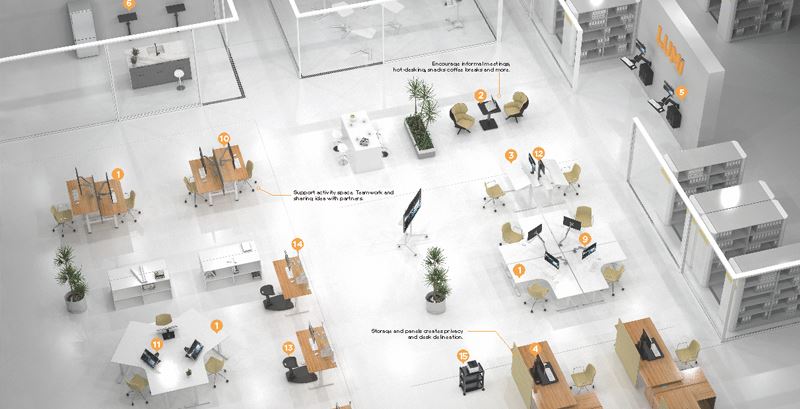Ergonomics in The Workplace
Ergonomics (a.k.a. human factors) is the process and science of how to optimize and improve productivity and comfort in the workplace. It aims to reduce the risks of discomfort or injury and increase employees’ satisfaction in the job.
The rapid development and implementation of technology changed the way of the work environment, which has improved productivity and efficiency. However, think about the widely-used computers - if you hunch over for a long time before, it will cause computer-related overuse injuries, such as eyestrain, muscle, and joint problems, obesity, and even mental problems.
Our technology is mobile, but our bodies aren’t. The modern office workers may sit still at the desks for about eight hours a day. But prolonged sitting has proven to increase the risks of high blood pressure, obesity, cervical spine stiffness, heart disease, and even cancer.
In addition to health problems, improper posture before the desk will also affect our appearance and shape. Take the “turtle neck” as an example, which not only looks bad but feels terrible. The slumped-forward and curved shoulder posture that afflicts anyone who sits at the desk and gazes at monitors.
Ergonomic injuries don’t happen overnight. The key risk factors are holding in awkward postures in prolonged time with higher frequency. Thus, a proper ergonomic design helps maintain a neutral position, relieve fatigue, and create comfort and healthy workspaces by modifying the work environment to fit the workers.
The first step to reducing ergonomic risks in the workplace is to adjust the desk height correctly. Optimal desk height depends on the individual, but most standard desks are around the same height. The simplest way to find out the ideal desk height is to rest your arms at your sides, keeping the elbow at a 90-degree angle and your upper arms in line with your body. Your hands will rest comfortably on the desk once the desk is at the right height. Although a regular office desk is in fixed height, a sit-stand desk allows adjusting the height to fit various shapes flexibly. What’s more, you can easily change posture from sitting to standing and be more active in the workplace.
Secondly, ensure the monitor height and distance from your eyes. Place the monitor at about an arm’s reach away to minimize forward-leaning to view. You can use a monitor arm or monitor stand to raise the height of display so that the top of it can be at or slightly below your eyes. Besides, the monitor arm with tilt, swivel, and rotation adjustability reduces glare and reflections.
Moreover, place the keyboard at the position wrists can be straight when typing, not bent to either side or up or down. With a keyboard tray, you can slide, tilt, and pivot your typing surface. The under-desk design allows placing your mouse and keyboard in the “neutral reach zone,” keeping your arm bent comfortably at a 90-degree angle.
In addition to the mentioned above, the position of feet is also worth noting. The Feet should be flat on the floor or a footrest when sitting in the chair. Furthermore, if you stand for a long time at the desk, a standing mat can help efficiently release fatigue and provide excellent cushioning when stepping on it.

No matter how you work or what you do, LUMI is the one-stop-shop for complete ergonomic product solutions. From the height-adjustable sit-stand desks, monitor arms, sit-stand desk converters, ergonomic chairs, footrests, and more! LUMI will outfit any home or office environment – no matter what you do!
Choose the ergonomic office solutions that match you the best from LUMI!






